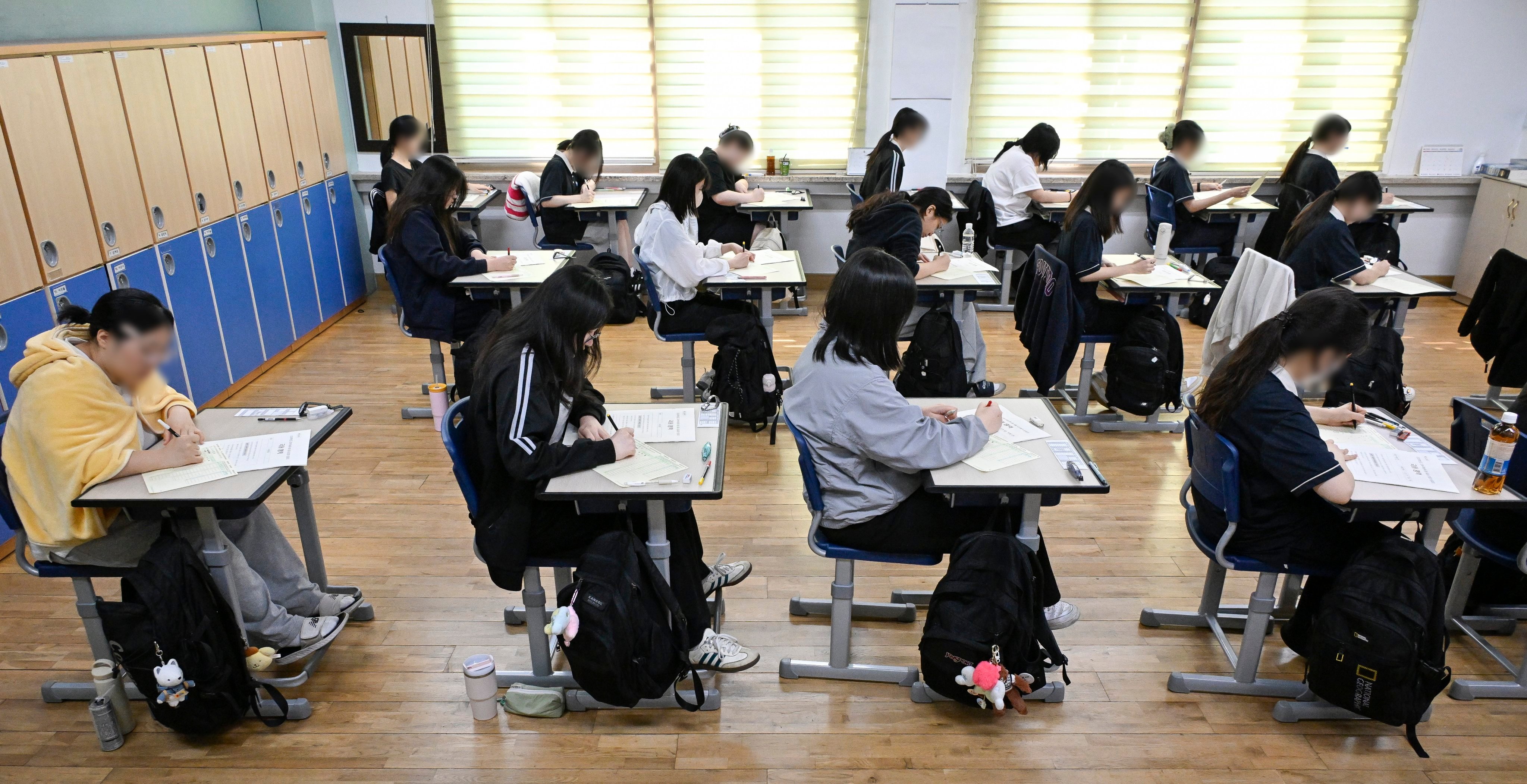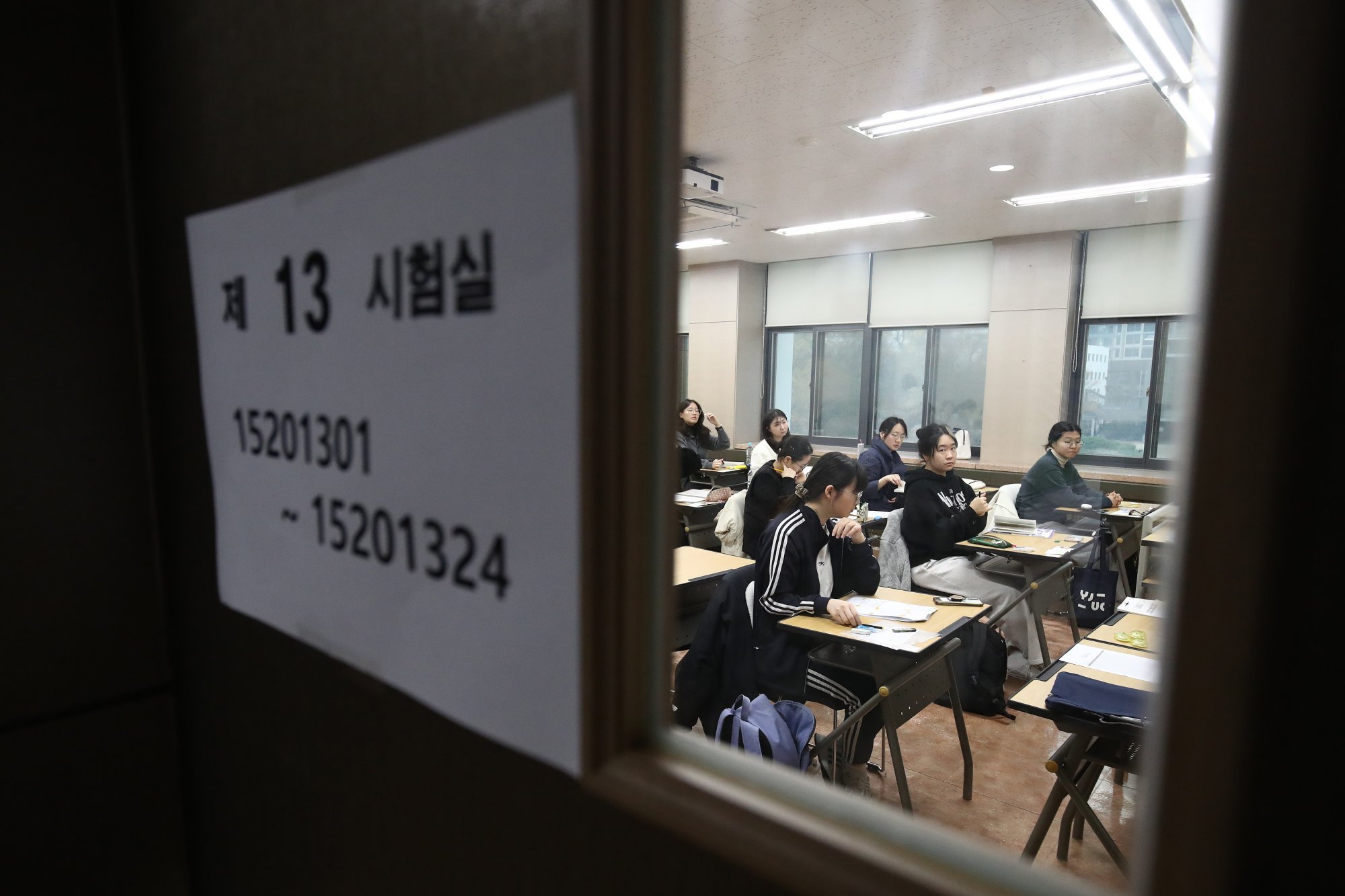Lost futures: teen dancers’ deaths expose dark side of South Korean education
Found dead in a flower bed, the three second-year students left notes revealing intense pressure over their grades and uncertain futures

A suspected suicide pact among three teenage girls in Busan has reignited urgent calls for education reform, shining a harsh light on the crushing academic and career pressures faced by South Korea’s youth.
Public criticism has centred on the country’s fiercely competitive university entrance system, widely blamed for thrusting children into a relentless academic race that begins as early as kindergarten.
The latest tragedy unfolded early on Saturday, when the bodies of three second-year students – aged 16 to 17 – were discovered at the base of a residential tower in the southern port city. All three majored in dance at a local arts high school.
Surveillance footage captured the girls riding a lift together to the 20th and highest floor – from where, police believe, they jumped. Handwritten notes found at the scene suggest that the classmates and close friends died by suicide.
Investigators say the teens were under intense academic and career pressure. “All three left notes indicating they were overwhelmed by academic stress and uncertainty about their future,” a police detective source told This Week in Asia.

Police have ruled out foul play or bullying, and noted that there was no evidence the girls had consumed alcohol or drugs.
“This tragedy is not an isolated incident – it once again exposes the structural crisis of youth suicide in our society,” the Korean Teachers and Education Workers Union (KTU) said in a statement on Monday.
“Given the pain these students must have endured before making this choice, both the education system and society as a whole must take responsibility,” the union said.
“Youth suicide is not just a personal tragedy; it is a form of social homicide – a product of the harsh systems created by schools, society and the state.”
The number of student suicides in South Korea has climbed steadily in recent years. According to the Ministry of Education, 214 primary, middle, and secondary school students took their own lives in 2023 – nearly double the 108 recorded in 2016.
“This is a stark warning that our competitive, exam-centred education system has reached its limit,” the KTU said.
“A system driven by competition and entrance exams, schools that leave no space for emotional care or healing, and policies that prioritise performance over growth – all of these are suffocating the lives of our youth. The education system must change.”
The union has also called for a special audit of the school attended by the three girls.
The school, operated by a private foundation, has faced repeated allegations of financial mismanagement, with 10 of its 14 teachers reportedly replaced mid-term – further unsettling students.

‘Amounts to child abuse’
Choi Seon-jeong of the KTU said competition for places at top arts colleges was especially fierce, with some students enduring more than a decade of preparation.
“In the face of bleak future prospects, they must have lost hope,” Choi said of the victims. “The level of academic stress students face amounts to child abuse.”
Parents, determined for their children to excel, are inadvertently helping to fuel the crisis by investing heavily in private tutoring – a sector that has become ever more costly.
Despite a decline in student numbers, private tutoring expenses for primary, middle and secondary school pupils hit a record 29.2 trillion won (US$21.2 billion) last year.
Enrolment fell by 1.5 per cent, or 80,000 students, from 5.21 million in 2022 to 5.13 million in 2023, yet spending on private tuition increased by 7.7 per cent, or 2.1 trillion won.
Some private academies now market preparatory courses to primary schoolchildren hoping to enter medical school, capitalising on the government’s recent decision to expand medical school quotas.
For the families of the three girls, the shock and grief are overwhelming.
The mother of one victim told the Chosun Ilbo newspaper that her daughter had been deeply conflicted, unsure whether to continue pursuing dance. She had only resumed lessons two weeks earlier after a two-month break.
In her final message to her mother, she wrote: “Thank you, Mum. I hope my sister does well. Thank you to all my relatives who loved me.”

“I can’t understand how this happened,” the mother told the newspaper through tears. “Why would she leave us so soon when she was so full of gratitude?”
The father of another girl, away on business in Japan, missed her final call on Friday night. “I didn’t know it would be the last time,” he said. “It breaks my heart.”
The girls were reportedly under immense pressure to secure places at elite arts colleges in Seoul.
After regular school hours, they attended intensive after-school lessons, entered frequent competitions, and struggled to maintain their physical appearance to conform to strict standards, according to local media.
The financial burden on their families is also believed to have been substantial.
In Busan, monthly tuition at dance academies reportedly ranges from 600,000 to 700,000 won. The cost of choreography for performance competitions – which offer bonus points for university admissions – can reach 5 million won, and costumes up to 3 million won.
The Busan Metropolitan Office of Education has since launched a special audit of the school, and police said they will continue interviewing teachers and students to uncover the circumstances behind the tragedy.
If you have suicidal thoughts or know someone who is experiencing them, help is available. In Hong Kong, you can dial 18111 for the government-run Mental Health Support Hotline. You can also call +852 2896 0000 for The Samaritans or +852 2382 0000 for Suicide Prevention Services. In the US, call or text 988 or chat at 988lifeline.org for the 988 Suicide & Crisis Lifeline. For a list of other nations’ helplines, see this page.